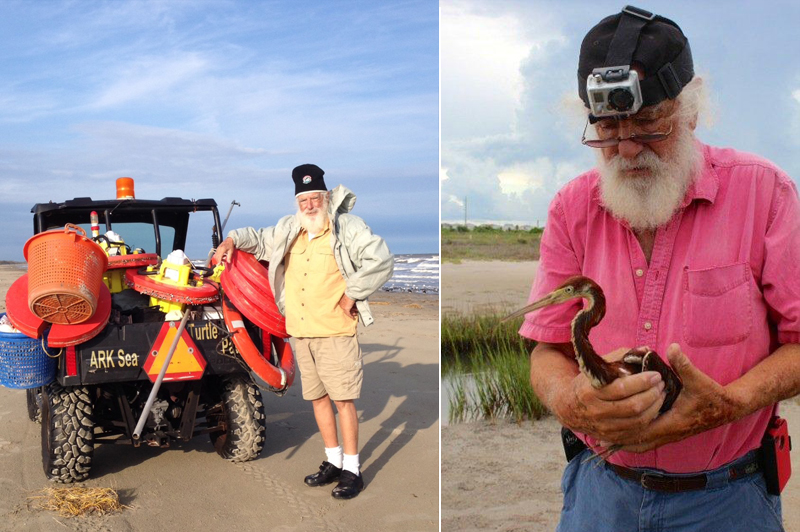Texas’ Legendary Beach Hero
Published by Ocean Conservancy
We are celebrating the life of a true ocean hero, Tony Amos, who died last month after a recent diagnosis of pancreatic cancer. Tony dedicated his life to the animals and beaches of the Gulf of Mexico, and left an impression on many of us here—myself included.
The first time I met Tony, he was leading me and several other marine biology students from the University of Texas on a class field trip. It was my first summer at an actual marine lab, and I was pumped. I spent my days in the lab studying fish, on a boat collecting sediment samples, or tromping through the marshes around Port Aransas, Texas. That day we were going to one of Tony’s beach survey spots, and he was teaching us about marine debris, its impacts and origins, and how it collected on certain parts of Mustang Island more than others because of how the currents converged. He had answers for all of the questions we could throw at him. I knew who he was, because I’d heard about him around campus: he started the ARK, or the Animal Rehabilitation Keep, where injured marine animals were taken to rehabilitate, often by a boat or by becoming entangled in a fishing line.
That summer, I volunteered at the ARK and I distinctly remember the unique and unmistakable smell of fish and seawater. I spent Thursday afternoons throwing fish to pelicans and squid to sea turtles, recording dolphin behavior, or very carefully feeding a rescued lynx.
But Tony’s legacy went beyond the ARK. In 1986, he played an instrumental role in establishing the first annual International Coastal Cleanup, an event that for more than 32 years has brought together 12 million volunteers to keep 228 million pounds of trash out of the ocean. And for more than 30 years, he walked the beach every day, taking note of what he saw.


It was in this capacity that Tony crossed my path again. Here at Ocean Conservancy, we developed an inventory and gap analysis of all the long-term monitoring efforts in the Gulf. Tony was still taking those walks and collecting data, and by doing so had amassed one of the longest records of trash, beach conditions, birds and sea turtles along the Texas coast. The value of the dataset is immeasurable because it helps us understand how and why the environment is changing, and tells us which parts of the coast are experiencing stronger impacts from human behavior than others.
I didn’t realize then how big of an impact that day on the beach with Tony would have on me or how I would always remember the smell of those turtles, but it did and I do. It is a rare treat to meet someone like Tony who can inspire you to be a better person and get out and make a difference in the world around you. This weekend Tony’s ashes were sent out to sea on the back of a green sea turtle. I know he will be missed, but his legacy continues through the work of the ARK, recently renamed the Amos Rehabilitation Keep in his honor.
You can find about more about the ARK’s recovery after Hurricane Harvey, watch a video series about Tony or even sign up to volunteer on their website. You can also continue Tony’s legacy by conducting and recording your own trash cleanups with our trash tracking app, Clean Swell.
The post Texas’ Legendary Beach Hero appeared first on Ocean Conservancy.
Read the full article at: https://oceanconservancy.org/blog/2017/10/04/texas-legendary-beach-hero/


